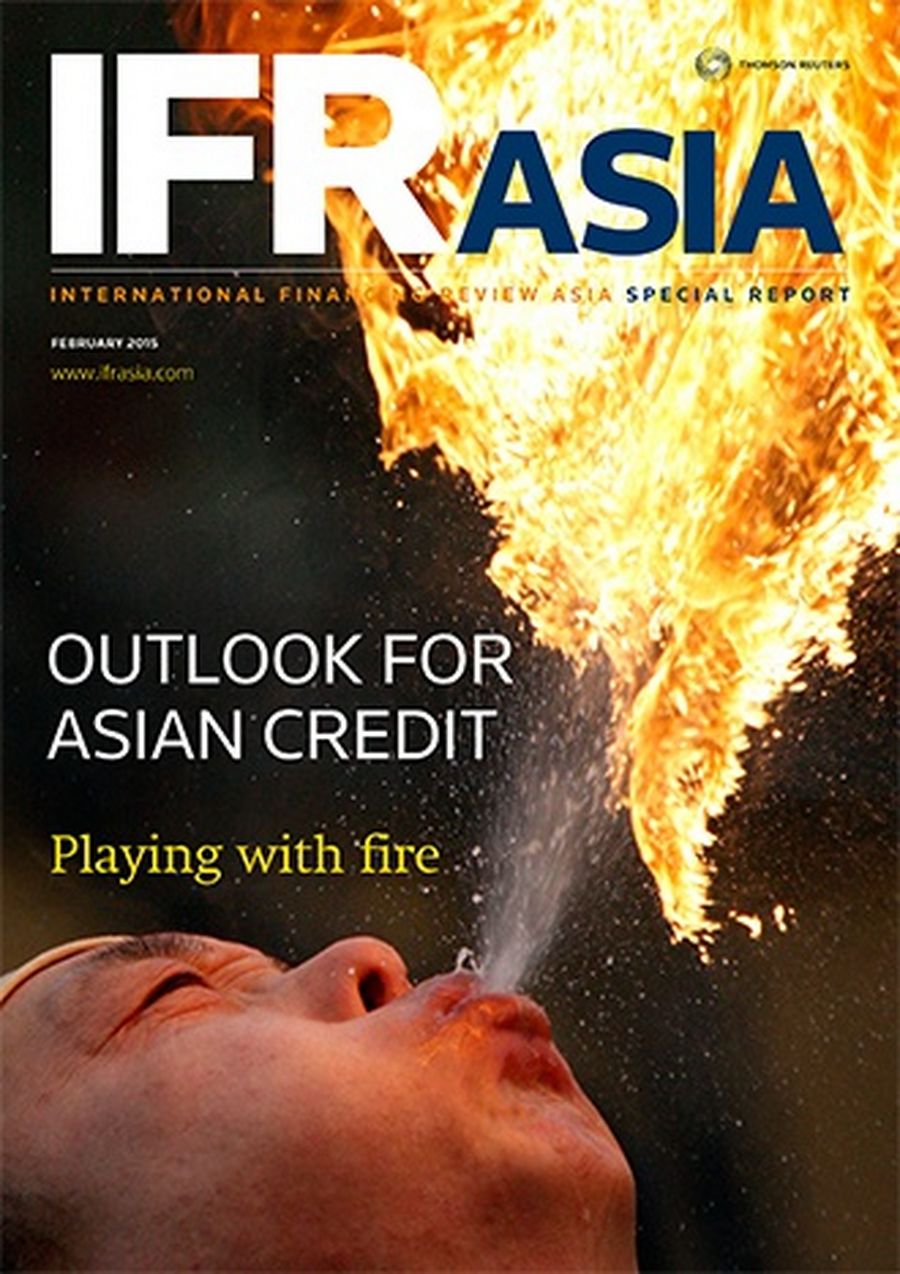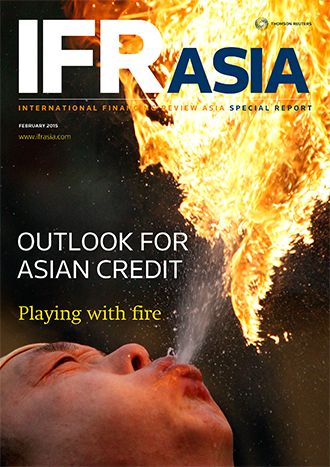
Playing with fire
Source: REUTERS
A stuntman spits fire during a performance at a tourist attraction in Kaifeng, Henan province.
Asian credit has been enjoying its time in the sun in recent years. Companies across the region have been able to fund their growth plans at low rates, and investors have done well.
Nevertheless, the start of 2015 has served up a reminder that Asian bonds can be a decidedly risky business.
Kaisa Group, the first Chinese property company to miss a coupon payment on a US dollar bond, has sounded the alarm bells. The price of its debt plunged from near par to 30 cents in a matter of weeks, before bouncing back 50 points on news of a change of ownership.
Aside from Kaisa’s woes, rumours of corruption probes triggered 10-point swings elsewhere in China. More restructurings are looming in Indonesia’s coal sector, and oil prices have roiled the Singapore dollar debt market.
Local markets have struggled. Singapore dollar issues slid 60% in January versus 12 months earlier and Dim Sum bond sales are down 70%. If liquidity in those markets remains constrained for long, refinancing concerns are inevitable.
Alongside isolated default concerns is the issue of monetary tightening in the US, which will challenge the resilience of emerging markets everywhere, and renewed concerns over Greece’s future in the eurozone.
Clearly, this is not a market for the faint-hearted.
Yet business has been brisk. After a slow start to the year, Asian issuers completed US$22.3bn of new issues in G3 currencies in January – only a fraction shy of the US$25bn in the opening months of 2013 and 2014, when credit conditions were far more benign.
Shimao Property, with a Ba3/BB/BB+ rating only one notch better than where Kaisa was two months ago (Ba3/BB–), drew US$5bn of orders for its $800m return, albeit at a premium to its pre-Kaisa curve.
High-yield issuers have emerged from far beyond China, suggesting that the search for diversification remains an important driver of the Asian market. India’s Delhi Airport, in particular, has hinted at the potential for Asian infrastructure financings in the global capital markets.
Multi-billion dollar fundraisings seem set to remain a feature of the Asian credit markets, as Tencent’s US$2bn print at the start of February illustrated. More bank capital offerings are in the works from China’s biggest lenders. The new normal is bigger than before.
Whatever happens next, the drama around Kaisa has changed some investors’ perception of Asian credit risk, and the negative headlines are more likely to drive global funds to look elsewhere. For others, however, every crisis is a buying opportunity.
Asian credit has always come with health warnings, and rightly so. Fortunately, it seems plenty of global investors remain happy to play with fire.
To view all special report articles please click here and to see the digital version of this report please click here .
To purchase printed copies or a PDF of this report, please email gloria.balbastro@thomsonreuters.com .
